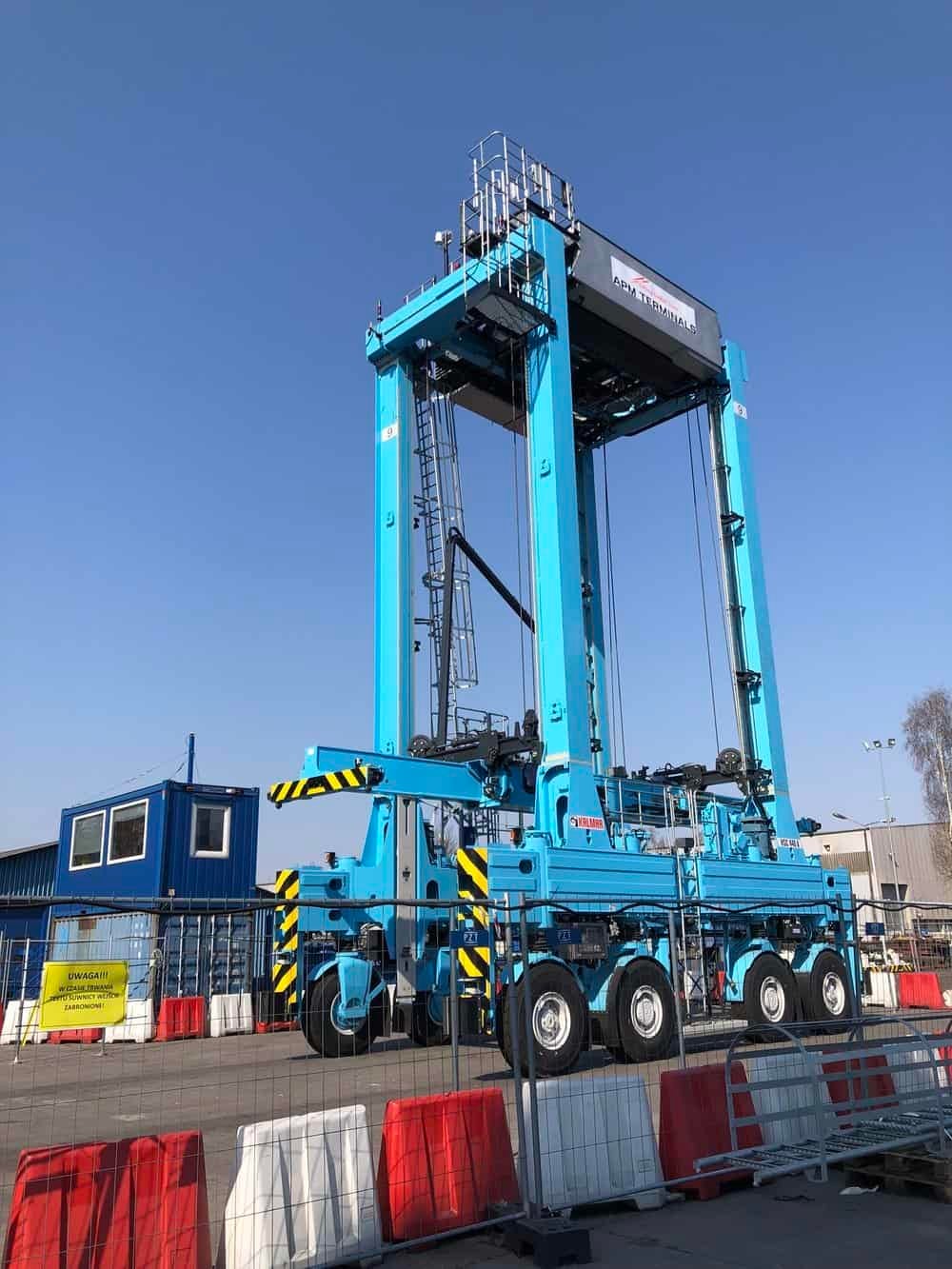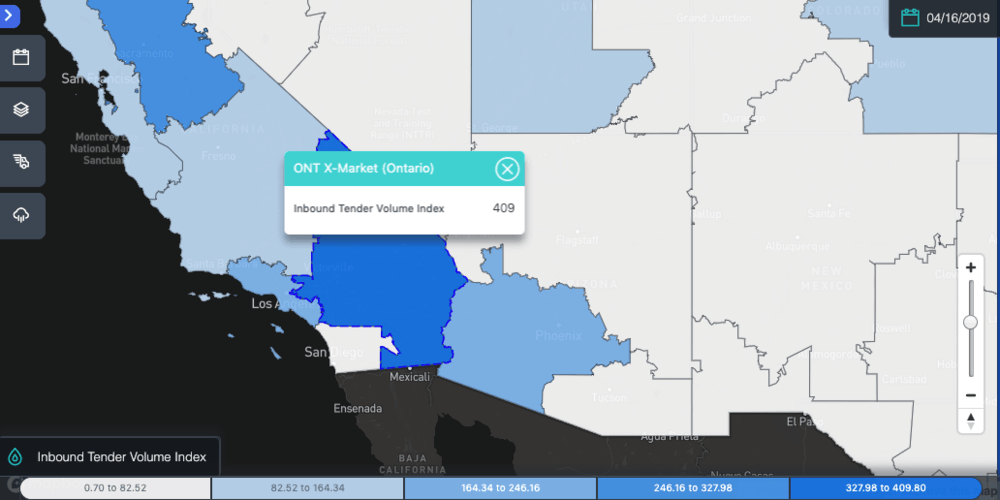‘Discretionary’ cargo may look elsewhere for U.S. dock space should the biggest terminal in the biggest port not find ways to be more efficient.
The board that heads the Port of Los Angeles will vote today on a relatively small project, but one with ramifications well beyond the port’s gates.
The board is scheduled for a rehearing today of an appeal to deny the APM Terminals subsidiary of Maersk (Nasdaq OMX: MAER.B) a permit to install electric charging stations, scaffolding and additional equipment at its Pier 400 facility.
If it is approved, the $1.5 million project will allow APM to start using automated container handling equipment at Pier 400.
The International Longshore and Warehouse Union (ILWU) asked the board to deny the permit, saying it would be the first step to automating their members out of work.
The first hearing in March on the appeal was a raucous, four-hour event that ended with no decision on the permit. Instead, Los Angeles Mayor Eric Garcetti tried to broker a peace deal between Maersk and the ILWU over the matter.
Today’s hearing has the potential to be a repeat, as the ILWU said it plans to mobilize up to 2,000 people, including local politicians and striking Uber drivers to march to the Tuesday morning hearing.
At issue for the ILWU is the introduction of automated straddle carriers, which take containers off the wharf and into container stacking yards for dispatch to drayage or rail.
That job is currently handled by hostlers and yard trucks. Much of the driver pool for those trucks are part-time workers used on an as-needed basis.
Pier 400 may employ between 150 and 200 of these drivers at anytime. The drivers are dispatched by the ILWU depending on container volumes coming into the port. But they are generally not covered under the existing contract for full-time longshore workers.
Some of these “casuals” as they are known do become full-time longshore workers, who have an average salary of $183,000, according to an economic study sponsored by Maersk. Most of the casuals at Pier 400 earn less than $10,000 per year through the part-time work.
APM Terminals spokesman Thomas Boyd said approving the permit does not mean any layoffs for full-time longshore workers at Pier 400.
At this point, APM is just trialing the automated straddle carriers, the first of which will come in June, to see if they perform as expected.

Should the project prove successful, Pier 400 could potentially use up to 100 straddle carriers in its yard, which would result in a lower demand over time for casuals.
APM knows the straddle carriers could affect some “jobs that have been in place for a long time,” Boyd said. But APM’s goal is “how do we as an employer make these changes work in a compassionate way.”
To that end, APM is offering longshore workers training in repairing electric vehicles, such as the straddle carriers, since demand for repairing diesel-powered hostlers will flatten.
Retraining for new jobs is a term of the port’s 2008 contract with the ILWU, which also allowed the terminal operators to start considering automation technology.
An ILWU representative was not available to comment by presstime.
With Southern California ports seeking to eliminate diesel emissions over the next decade, “all the terminals will have to get rid of diesel equipment and you are not going to need diesel mechanics anymore,” Boyd said.
Beyond yard equipment, the straddle carriers could also reduce emissions from port trucking.
Straddle carriers are already in use at two other marine terminals in the area – TraPac Los Angeles and the Long Beach Container Terminal. Both terminals routinely report some of the lowest turn times for drivers fetching and dropping off containers, averaging one hour or less on a regular basis.
Boyd declined to say what the turn time is at Pier 400. But according to the Harbor Trucking Association, the Port of Los Angeles saw a port-wide average turn time exceeding 80 minutes. The long turn times cut into the ability of drivers to serve the fast growing Ontario market (SONAR: ITVI.ONT) since the one-way trip from the port to there is at least an hour or more.

With more trucking demand coming from moving cargo to distribution centers on the outskirts of Los Angeles, reducing the turn time at Pier 400 means truckers “can double their productivity so they can start making more money.”
The straddle carriers are also a step to enabling 24-hour operations, which would also further the goal of reducing truck traffic that plagues the areas around the Southern California ports. It would also speed up vessel loading and unloading operations at the busiest marine terminal in North America.
But APM, as do the other terminal operators, faces high costs of going to all-night operations as the ILWU contract gives the overnight “hoot” shift eight hours of pay for five hours of work, Boyd said.
“It’s a very expensive shift,” Boyd said. “The future with world trade growth is going to 24-7 operations.
“If you want to address traffic and congestion, you have to do things differently,” he added.
Congestion, of course, plagued the Southern California ports due to the container volumes coming in during the fourth quarter of 2018 and into January 2019.
The ability to offer shippers faster and more efficient container moves will be key for the Port of Los Angeles to remain a port-of-choice for the nation’s cargo owners, Boyd said.
“This is either a vote of confidence going forward for the Port of Los Angeles, or if there’s going to be a lingering issue of labor and port operations, [shippers] are going to take their discretionary cargo to Savannah or to Houston or to Prince Rupert.”
Maersk calls out Asian peers for subsidized shipping
Danish shipping giant calls government support for distorting markets. (TradeWinds)
Carriers say non merci beaucoup to French speed limits
Country’s unilateral move to check greenhouse gases seen as impractical. (The Loadstar)
Europe’s biggest port complex may license fuel sellers
Flemish ports mull move to help shipowner maneuver major fuel switchover. (Ship & Bunker)
Shipowners gambling on IMO 2020 prices
Diversity of approaches to handling low-sulfur rules means winners and losers. (Lloyd’s List)







